The Sacrifice
This came runner-up in the Bodley Head / Financial Times essay prize. It was published as an e-book by Bodley Head.
When I arrive in Llallagua it is dark, freezing and silent, save the shuffling miners. I follow them up to the mouth of the mine as the sun rises. A drunk man falls into step beside me, extending a hand. ‘You going into the mine?’ I say yes, he grins and leaves. Near the entrance, between stalls selling spirits and dynamite, I find my contact: Doly, a rare female miner, short, strong, holding a pair of boots.
Llallagua is a town in the Bolivian altiplano, the highlands that span the western part of Bolivia. A little further to the west, and the Andes tip over into Chile or Peru. To the east, Bolivia spills down into the tropics. With its hard sun, thin air and rich subsoil, the altiplano has long been a source of wealth for those that can endure it.

This mine is called Siglo XX – 20th Century – and it was once the world’s richest tin mine. When it was given the name, it was probably meant to imply the mine’s modernity. Now it has a new significance. Over the course of the century the mine proved a pivot on which Bolivia’s history turned.
In the 1910s, Siglo XX was acquired by Simon Patiño. It made him one of three mining barons who practically ruled Bolivia until the revolution of 1952 and the nationalisation of the mines. The Catavi-Siglo XX complex became the largest component of Comibol, the new state mining company. Its miners were radical leftists. They were involved in Bolivia’s continuous stream of coups, the guerrilla war of Che Guevara, and once suffered the worst massacre of workers in Bolivian history. Then, in 1987, as part of an economic restructuring with the IMF and the World Bank, the government shut the mine. Today, what remains is picked over by thousands of small-scale miners who are part of the so-called cooperatives that dominate contemporary Bolivia’s politics.
Doly is one of them. She hands me a helmet and I follow her into the mine. The hubbub of the miners gathered outside is snuffed out. There is no light, except the faint, haloed beam from our head torches. I steal looks around while trying not to trip. There are rails on the ground, and great piles of litter to the side. Overhead, beams of wood, many buckled, splintered and rotting. The puddles underfoot are a lurid orange. Doly tells me these tunnels were made by Comibol, using vast machines. Walking them now feels post-apocalyptic. Like wandering the ruins of a greater civilisation.
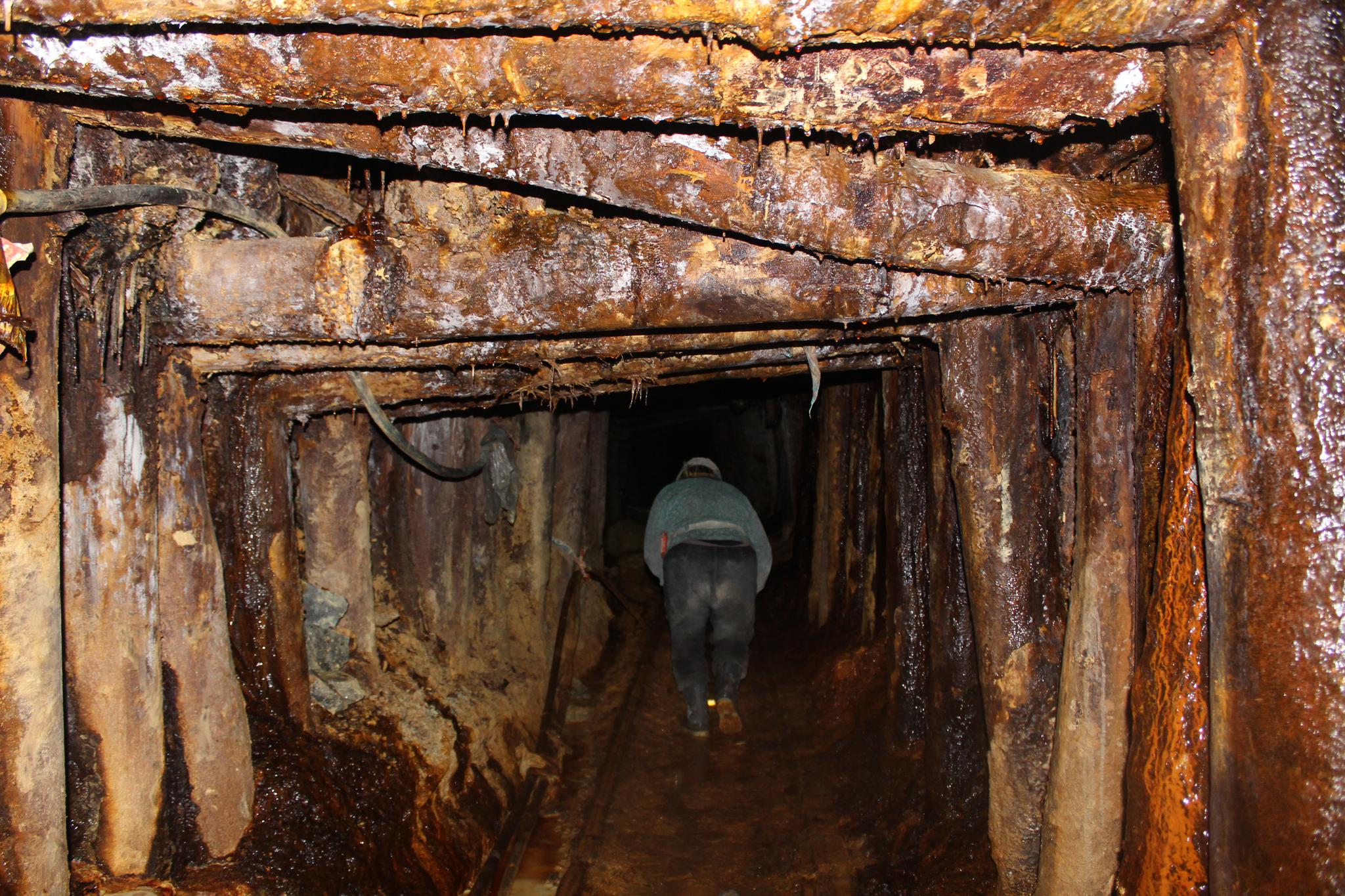
We arrive at the den of Doly’s cuadrilla – her three-man team. The place is homely. A warm tungsten glow; clothes hung to dry; a tiny altar for the Tío, the god of the mine. We sit down to chew coca leaves. Without coca, a mild stimulant more like coffee than cocaine, the conditions deeper in the mine are intolerable, Doly tells me. Chewing in silence, I cock my ear at a new sound coming through the walls. Tap, tap, tap. ‘Another cuadrilla,’ says Doly. Somewhere in the mountain, they are hammering at the rock. It sounds like Morse code. Doly’s son, Luis, passes me a bottle of spirits. ‘Take a sip – and give one to the Tío.’
Half an hour later, with a golf ball of coca in each cheek, we leave the den and go deeper. Soon we come across a ladder that disappears through a hole in the ground. Doly leads and tells me to follow, but slowly, and to grip tightly. I put my foot on the first rung. It is slick and sags under my weight. ‘Con calmita, con calmita,’ says Doly soothingly. The darkness seems thicker down here; the torch doesn’t reveal anything. It helps me focus. One rung, then the next. Finally my foot finds the ground. Later, Doly tells me it was six ladders lashed together, and forty metres.
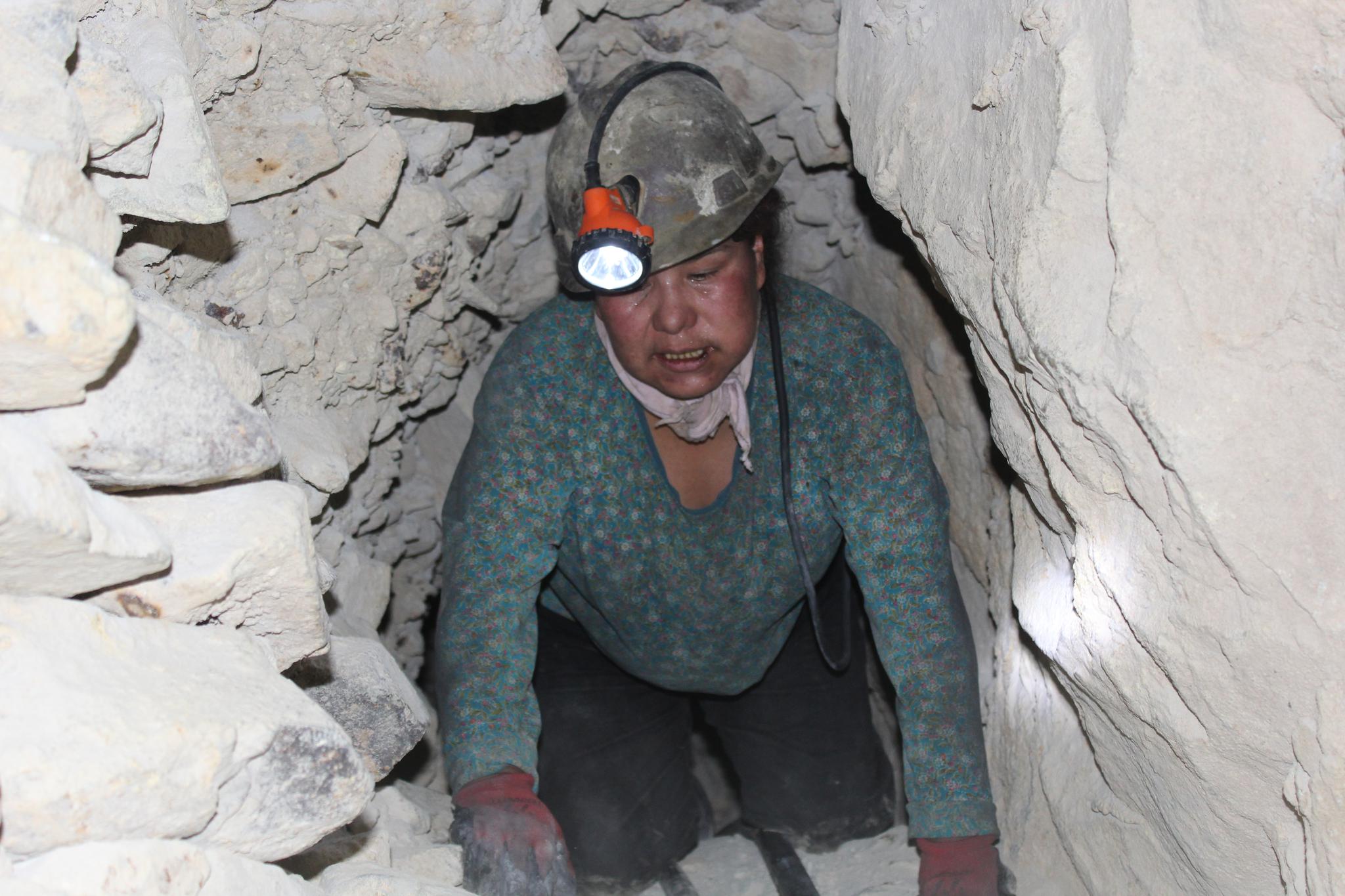
From then on, we crawl. These tunnels are new ones, hacked out by Doly’s cuadrilla with nothing but hand tools and sticks of dynamite the size of cigarettes. The ceiling rakes my back, and the air is at once hot and wet and thin. All I can hear is my own breathing. Suddenly Doly stops. There it is: a vein of tin, like a shining scar. Doly sets to work with a hammer and chisel. ‘Now you see: the miner’s life is hard,’ she says, between breaths. ‘We get sick from silicosis, tuberculosis, and then we die. We give our lungs for this.’ Dazed, I ask about accidents. ‘We trust that the rock is hard.’ In places it is; in others it crumbles under my fingers.
Miners don’t tend to wear watches: they go by the taste of the coca in their mouth. After four hours, it fades. That’s when they know to rest. The coca in my cheek is as bland as paper by the time we emerge. I hook it out with a finger and spit drily on the ground. I look over the endless ochre expanse of altiplano and feel as if I am drinking the light. Behind me, Doly says to herself, ‘Ya no estamos muertos’ – now we’re no longer dead.

***
In any other country, the form of mining practised by Doly would be recognised as informal mining. The hand-me-down knowledge and the lack of equipment or regulation are telltale signs. But in Bolivia such mining is institutionalised in the form of the mining cooperative, an entity that is neither public nor private, but has the legal right to a bit of land, and a bottomless capacity for labour.
Officially, there are around 130,000 cooperative miners in Bolivia. But there are many more ‘peones’, extra labourers contracted by cooperative miners, who bring the number up to 200,000 and perhaps beyond. It’s hard to say exactly, because peones are illegal. Nonetheless, the official figure alone is more than 90 per cent of Bolivia’s mining workforce. The full figure, plus their dependants, makes for a significant chunk of Bolivia’s 11 million population.
The cooperative mining sector is an accident of Bolivia’s particular economic history. As a mining country, it has always had a lot of miners. As an extractivist country usually reliant on a particular mineral export at a given time, it has always been vulnerable to collapses in commodity prices. Whenever these disasters struck in the twentieth century, they sent the country into political convulsions. And the laid-off miners often went from jobs in the public or private sector to jobs in cooperatives.
The cooperatives truly became a force with the neoliberalisation of the economy that began in 1985. Comibol was all but liquidated, and 23,000 state miners were put out of work. The government encouraged them to join or form cooperatives, giving them the right to continue working Comibol’s less valuable mines. (The more valuable ones were sold to private interests.) All at once, the cooperative sector was flooded with politicised workers who brought the discipline of the unions with them. Over time, their political conscience was diluted, then disappeared. But the organisational structure remained. Today’s cooperatives can be seen as a malignant evolution of Bolivia’s formidable trade unions.
‘They act like collectives in a way that is very much informed by their union history, but their political goals are not the same,’ says Andrea Marston, an academic who spent almost two years living in Llallagua. ‘They’re not interested in wages or control of how many hours they work. But they do treat the state as if it’s their employer and they need to battle it like unions did with their companies. But what they are looking for is more areas to mine, more subsidies, less taxation and reduced environmental standards.’
In reality, the term cooperative is a misnomer. Depending on the case, up to 80 per cent of the miners are actually peones and don’t enjoy any of the rights or benefits that members of the cooperative do. Then, at the other end, there is now a class of cooperative bosses who are really businessmen.
They don’t work in the mines, and they draw high salaries. These men take the privileges afforded them by the government, and then sign contracts with private companies to sublet those privileges. And they’re powerful: they direct federations of cooperatives, represent tens of thousands of workers, and enter politics, even becoming ministers.
At root, the cooperatives have a kind of unspoken agreement with the government. ‘For [President Evo] Morales they are votes, but they’re also a kind of paramilitary force, because the miners are kind of armed and dangerous, and if they’re supporting the government they can make sure everyone else in the region votes for him,’ says Marston. ‘And the cooperatives need the state because they need money for equipment, and new areas to exploit. It’s a relationship of dependency, in a classic sense.’
‘The big problem the government has is its inability to create jobs,’ says Héctor Córdova, former president of Comibol, which has been revived somewhat under Morales. ‘And if there aren’t any jobs, the cooperatives thrive.’ The cooperative mining sector is part of an even larger informal economy, in which a liquid workforce moves between the soy fields of Santa Cruz, the contraband routes of La Paz, and stints in Brazil and Argentina. But the mainstay, the most reliable of the lot, is the mines. The cooperative sector acts as a sponge for unemployment, covering up economic mismanagement. From 2006 to today, the number of cooperative miners has almost tripled.
Yet the relationship between the government and the cooperatives has always been strained. This culminated in a moment, a few years ago, when the government tried to rein the sector in. It wanted to control the peonaje system, to limit cooperatives’ ability to make deals with private companies, and to unionise cooperative employees.
In August 2016, the cooperatives responded by blocking key motorways. A vice minister, Rodolfo Illanes, went to negotiate. The miners took him hostage. The police charged, and opened fire on a demonstration for the first time since the 2003 ‘Gas War’, the nationwide protest that paved the way for Morales to enter power. A miner was killed, and his colleagues responded by torturing Illanes, then killing him with a rock. They left the body on the road. Several more miners were killed before the protests dissolved.
In the aftermath, Morales manoeuvred skilfully. The government doubled down, adding more regulations. Now the cooperatives would need to pay VAT, submit themselves to audits, and return some of the territories they were subleasing to multinationals. If they failed to meet the criteria, they would surrender their cooperative status and the privileges that go with it. After initially declaring that they would break with Morales, the cooperatives rowed back and re-declared their support.
Morales seemed to have won the brinksmanship contest.
But a few months before Morales had received a clear warning shot. In the February 2016 referendum on whether he should be allowed to exceed the constitutional limit and run for another term, a number of major mining municipalities voted against the proposal. Morales lost the vote by a narrow margin. It was his first big electoral setback. ‘Morales cannot afford to lose the mining cooperatives,’ says Córdova. ‘They, along with the coca farmers and the armed forces, are one of his three essential pillars of support.’
‘It’s not just Morales. All the governments going back have relied on mining cooperatives,’ says Marston. ‘But Morales has definitely continued that tradition – in a way that’s confusing for outsiders who are familiar with his environmentalist and socialist rhetoric. These cooperatives are neither.’
***
In Potosí, the temperature at night can drop to minus twenty degrees Celsius. My room doesn’t have heating, and the door that leads directly to the night air doesn’t fill the frame. I might as well be outside. I try to sleep, but some animal instinct, afraid of the cold, keeps me awake. I lie there and listen to the distant booms of dynamite in the mountain.
Cerro Rico has been mined for five hundred years, and every day miners extract 3,000 tonnes of mineral. From a distance, it retains its unnaturally perfect shape, like a blood-red version of Mount Fuji.
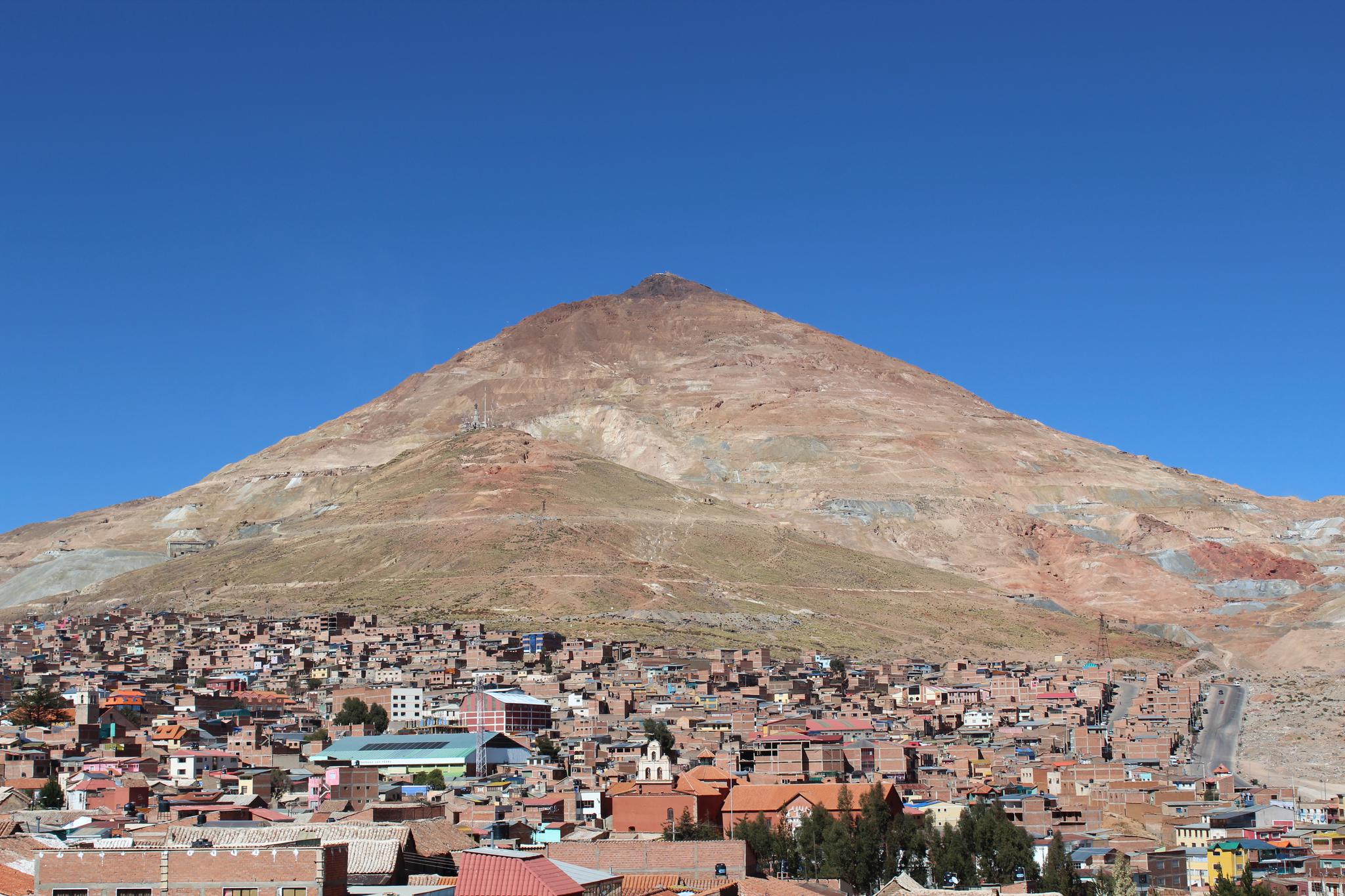
Closer, though, one sees it is scored with paths and pocked with nearly six hundred mines. Inside, the tunnels fork and wend chaotically. Since Comibol left, there is no central planning, and a study by the Bolivian Ministry of Mining found 138 collapsed zones and many more high-risk areas. Then, in 2011, the peak began to cave in on itself. After a few days there was a crater forty metres wide and deep. The government banned mining above 4,400 metres to prevent further collapse, but it still happens. This is typical of Potosí. There is a crazed, almost suicidal greed about the place.
The city is flush with cash, but none of it sticks around. Potosí is the poorest region in the poorest country in South America. About a third of the population lives in extreme poverty. In the neighbourhoods that skirt Cerro Rico, half are illiterate, the life expectancy hovers around forty years, and for every 1,000 births, 188 die before the age of one. That’s five times worse than the Bolivian average, and ten times worse than that of Latin America.
Nobody knows exactly how many lives the mountain claims. Cooperatives are meant to report deaths inside the mines, and they do, but perhaps not all of them. It would be in their interest to keep the figure low. The fact that the majority of Potosí’s miners are informal peones, not cooperative members, makes this easier: it can be hard to prove they were there. But the real killer is silicosis, the lung disease that, sooner or later, comes for every cooperative miner.
Ibeth Garabito, who runs MUSOL, an NGO that helps miners’ widows, has tried to put a figure on it. ‘Perhaps three a month die in accidents in the Cerro Rico, and we have calculated an average of fourteen deaths a month from silicosis,’ she tells me. That works out at just under two hundred deaths a year. Given that miners have, on average, five children, that’s one thousand fatherless children. ‘The mountain exacts a price,’ says Garabito.
In the MUSOL office, a cluttered room on the ground floor of Garabito’s home, I meet Margarita, one of the widows MUSOL works with. Between us on the sofa, like another guest, there’s a portrait of Garabito’s deceased husband. I try to be roundabout, asking Margarita if she could tell me her story. She responds matter-of-factly: ‘How my husband died?’ I nod. ‘It was a cave-in. I was five months pregnant … They brought my husband to me. He was dead, but he was still warm. It was ten in the morning.’
I ask her how she had supported her family since. ‘I have six children. I make bread to sell and I get 20 bolivianos [$3] a day. It’s not enough. My husband died three years ago, and it’s been three years without help from the cooperative. I’ve sacrificed a lot; I often go without food.’ There is a bowl of sweets on the table between us and, as she speaks, she eats them shyly but continuously. I sense that Garabito put them there deliberately.
Margarita’s husband was a peon, but he had signed a contract with a member of the Compotosi cooperative and worked with them for years. Since his death, though, that cooperative member has made himself scarce, and the cooperative’s lawyers have batted away any inquiries. They say the contract, if it existed, was between the member and the peon, and has nothing to do with them. ‘The cooperatives don’t want this aspect of their operation to come to light,’ says Garabito. ‘They prefer to paint themselves as a source of jobs: economically and socially important.’
‘Margarita’s case is an emblematic one,’ Garabito continues. ‘They say there are about 15,000 cooperative miners working in Cerro Rico right now. Of those, how many have insurance of any form? A few years ago, the figure was put at 2,800. That means that 80 per cent of their families are at risk of this situation … It is an inhuman form of mining that is practised in the Cerro Rico. The human being has no value.’
***
As our taxi judders out the city and up the mountain, Wilson tells me he has been hospitalised three times. He walks a little hunched, as if protecting something, and from time to time he has to stop to weather some internal pain. ‘I can’t bear being in hospitals any more,’ he admits. He’s looking into traditional medicine instead. Wilson is thirty-five and he started working in the mines when he was eight.
It is 1 August, a miners’ holiday, so we try three mines before we find anything other than smouldering fires and empty beer cans. At Candelaria Baja, there are a dozen young men drinking in the mouth of the mine. Between them are two white llamas. I ask if I can take a photo and receive sullen silence. Wilson murmurs by my ear: ‘After a few drinks they’ll say yes.’
In her book The Ministers of the Devil, the French anthropologist Pascale Absi writes that the urban elite look down on miners as brutish, alcoholic Indians. Ignorant, even if enriched by the mine. In part this is because they live recklessly, knowing that the mine will kill them before anything else. Hence the nickname ‘loco de la mina’. Madman of the mine.
They incorporate me into the drinking circle without a word. Two drinks are doing the rounds: first, two shots of 96 per cent spirits; then a warm cup of beer. At the end of every cycle, the llamas get theirs poured on their heads. I know why the llamas are there before they tell me: they’re offerings.
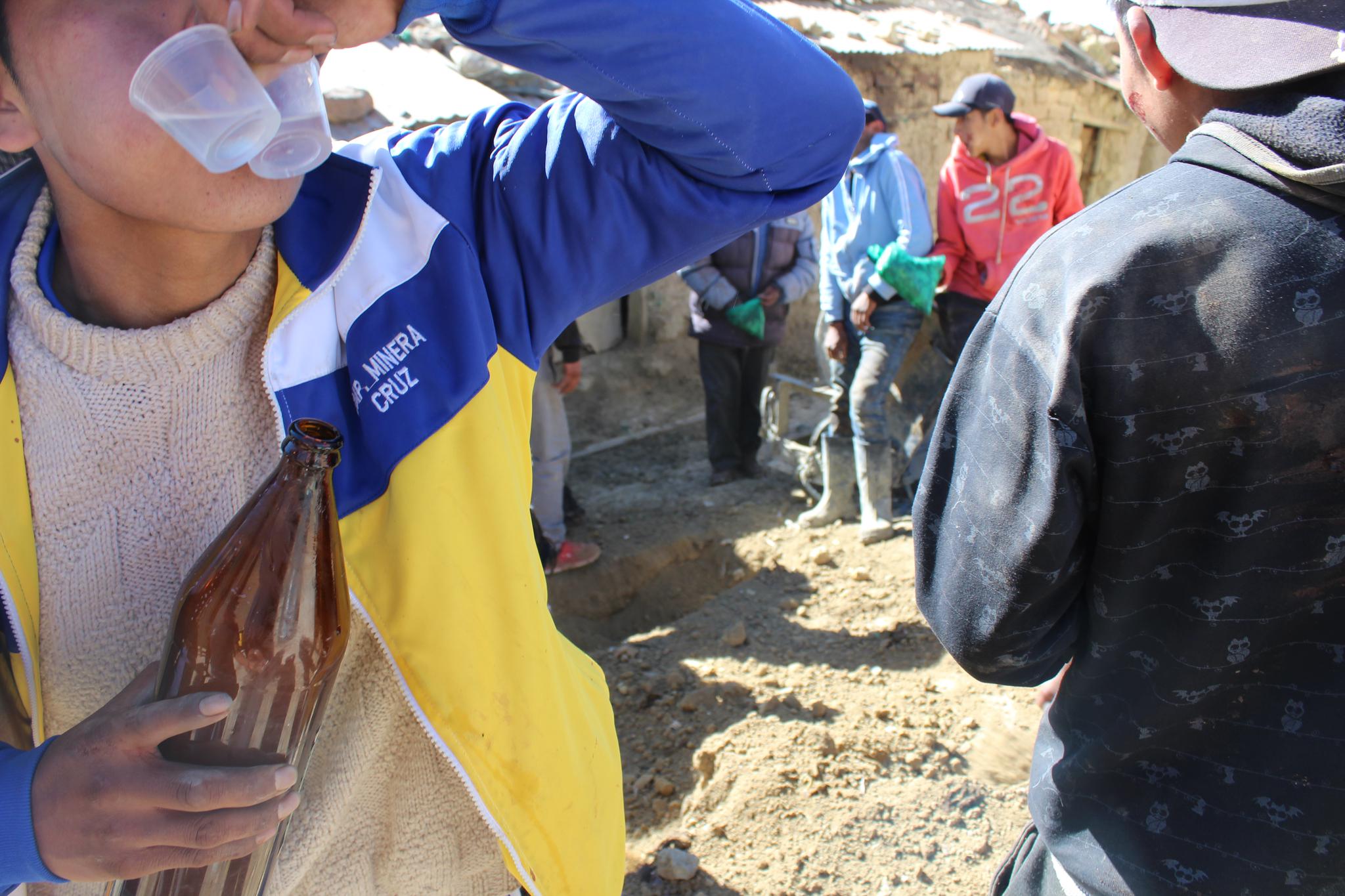
In the Andean cultural context, the mouth of the mine is a portal between worlds. Outside, the miners are Catholic. Inside, the human soul has escaped the jurisdiction of God. The Tío, a mercurial figure with the appearance of the devil, is the master of the mines and the veins, whose extraction he dictates. Hence the offerings: alcohol, coca, cigarettes – and blood. ‘This is a society that sees the mine’s riches not as a gift from nature, but as the result of a dangerous pact with the subterranean gods,’ writes Absi.
There is a sense that the men feed on the mine, and the mine feeds on them. As if the miner is a living offering, and the blood given to the Cerro Rico fertilises its veins. ‘We aren’t exploiting the mountain – we are working with it,’ one miner tells me. Sometimes they work like men possessed. ‘I couldn’t eat or sleep when I found a good vein,’ says Wilson. ‘I was a crazy driller, there were times when I kept going until I was about to pass out.’
The miners sound like addicts when they talk about the mine. They know the dangers, and many try to leave: one tells me he had just returned from Buenos Aires, where he worked in a relative’s vegetable shop; another had worked as a taxi driver. But something draws them back. I sense it is to do with the autonomy and power they have underground. There’s a heroic dimension to the work that they won’t find anywhere else.
So they stay: one more year. And on 1 August they sacrifice llamas. ‘The most important part of the llama is the blood,’ says Wilson. ‘Blood is life, and the gods don’t bleed. If we don’t give them blood, then they will take miners’ blood instead.’
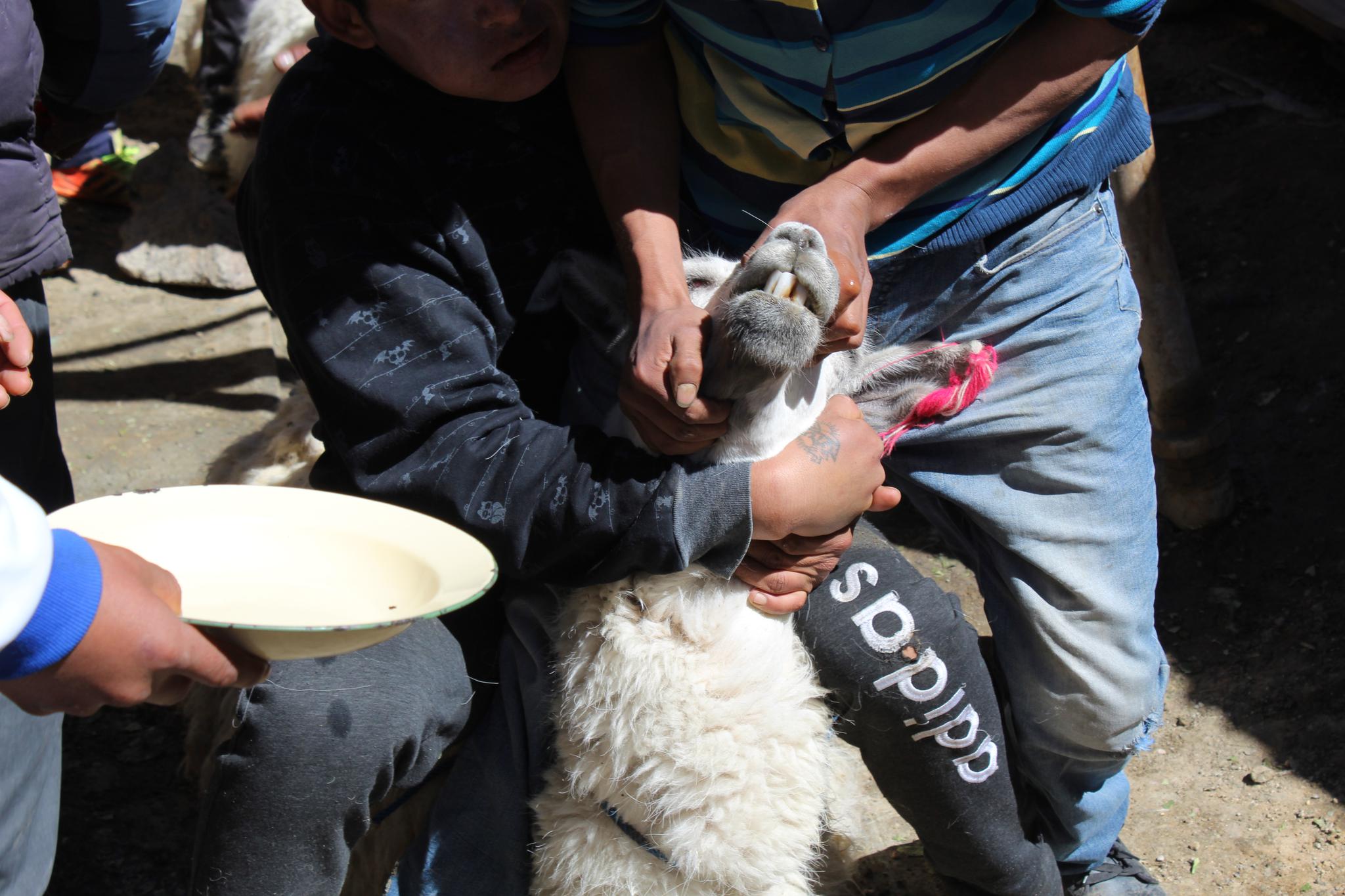
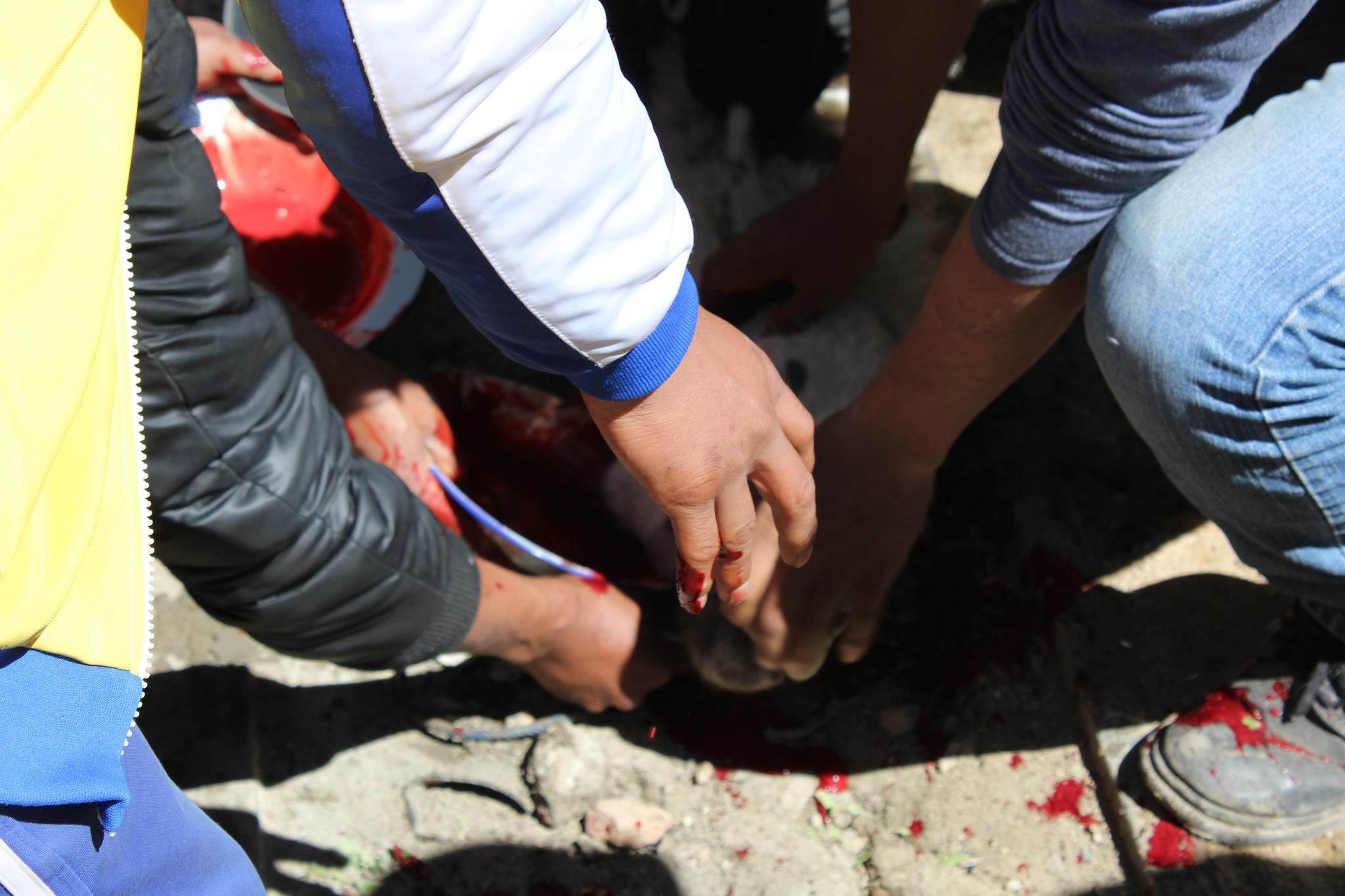
They pin the llamas down and cut their throats to the bone, catching the blood in bowls. They paint their cheeks with it, and spatter it against the mouth of the mine. Then they butcher the carcasses. They switch to Quechua as they skin the llamas, crack open the ribcages and scoop out the intestines. They break the bones at the joints and slice off the meat. The head, bones and intestines are arranged in a wheelbarrow with bright bunting.
They tip the wheelbarrow into a hole and begin filling it with earth. Someone hands me a spade. Then, standing around in a circle, they take turns dancing on the grave. They insist I do too. I step in and copy what I saw, scuffing the ground with my feet and turning on the spot. I see a ring of bloodshot eyes and yellow teeth flecked with coca leaves. Then I hear Wilson in my ear. ‘It’s time to go.’

Note: I wrote this at the start of August, three months prior to the October elections that upended the country.
You can download the ebook here: https://www.amazon.co.uk/Sacrifice-Bolivian-miners-extract-wealth-ebook/dp/B07Z1NBJ6L/ref=sr_1_9?keywords=the+sacrifice+mining&qid=1574512630&sr=8-9
Post a comment